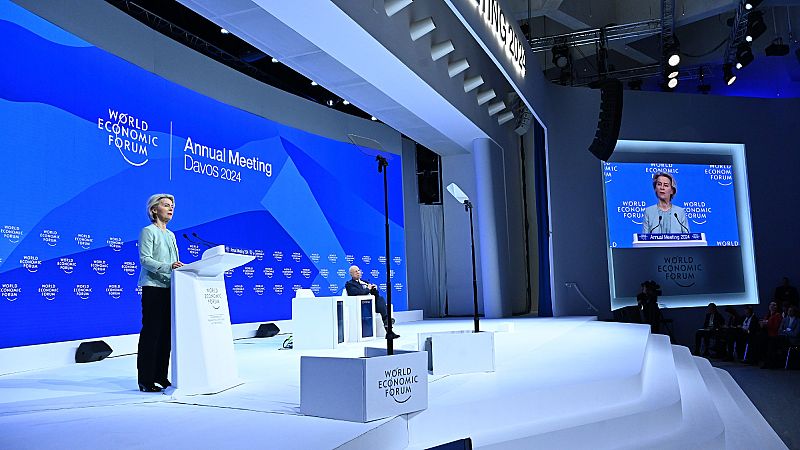Leak: EU sticks to 90% emissions cut, aims to be ‘world leader’ on circular economy

A leaked draft of the second von der Leyen commission’s flagship Clean Industrial Deal sets out the key elements the EU executive sees as key to challenging the US and China in the global battle for dominance in clean tech.
“The ambition of the Clean Industrial Deal (CID) is to make the EU the world leader on circular economy by 2030,” according to the 22-page document seen by Euronews.
Companies will be given “clear incentives to decarbonise within Europe”, it says.
The envisaged “thriving new European industrial ecosystem of growth and prosperity” will be brought about by promoting six “business drivers”, according to the text.
Affordable Energy
First is affordable energy, which is the subject of an action plan already slated for publication alongside the CID on 26 February.
The leaked text suggests the Commission will launch on the same day in tandem with the European Investment Bank a pilot programme for corporate power purchase agreements (PPAs).
A similar partnership will be created in a “grids manufacturing package”, clearly designed to address weaknesses in Europe’s transmission network that have been identified as a barrier to electrification of transport and industry.
In both cases, the sums involved have been left blank, suggesting the EU executive has yet to agree on how much financing to channel into these projects.
The plan also reiterates the need to further speed up permitting procedures and streamline the gas market, with recommendations on energy taxation to follow next year.
Boosting demand
Second driver is the creation of “lead markets”, partly to be achieved through a forthcoming Industrial Decarbonisation Accelerator Act, already mentioned in von der Leyen’s political priorities, now promised for the end of the year.
The EU will also press on with its efforts to create demand for hydrogen as a replacement for fossil fuels in industrial process. The Commission will “clarify the rules for producing low carbon hydrogen in a pragmatic way”, it says.
The other drivers include measures to boost financing, increase circularity and access to essential raw materials, and promote global markets and international partnerships.
Lastly, the CID recognizes the lack of an adequately trained workforce in Europe, and promises a Union of Skills, publication of which has already been slated for 5 March, alongside an action plan for European carmakers.
Commission sticks to 90% emissions target
Greg Van Elsen, who is leaking work on the Clean Industrial Deal at Climate Action Network Europe, noted that the EU executive appears not to be backtracking on its pledge to follow its own scientific advisors and propose a 90% greenhouse gas emissions cut for 2040.
The draft echoes recent comments by von der Leyen in asserting that Europe will “stay the course” on climate action.
“It's encouraging to see the draft staying on course with the European Green Deal, backing the 2040 climate target of 90% emissions reduction, accelerating renewables, and putting circularity at the front and centre of the EU's industrial strategy,” Van Elsen told Euronews.
But the draft “falls short” in targeting energy savings or reducing resource use as a means to create a resilient economy, he added.
“And with the financing part still lacking detail and ambition, the big question remains: who will foot the bill,” Van Elsen asked. “While the direction seems broadly right, too many crucial gaps remain unanswered.”
Today

